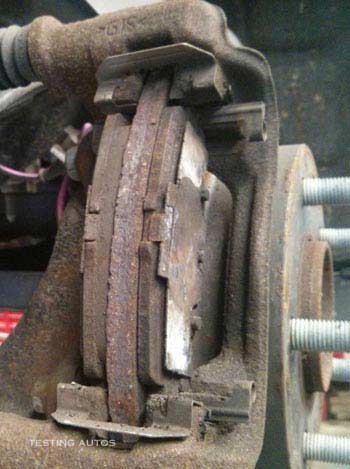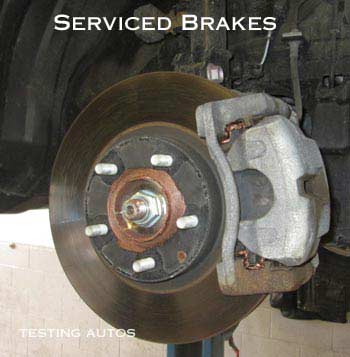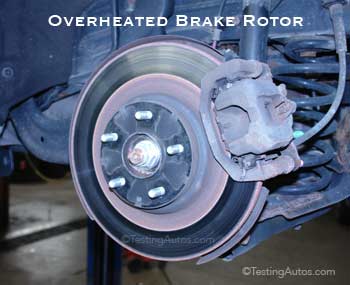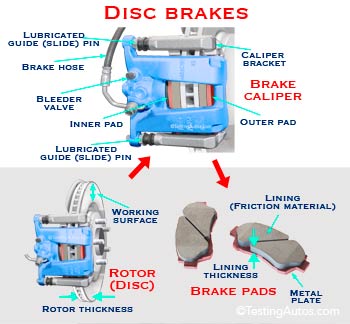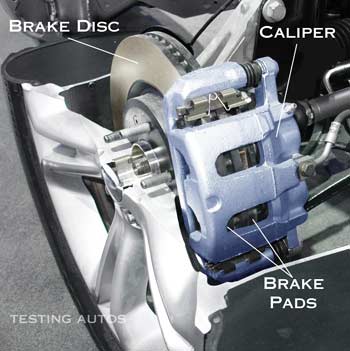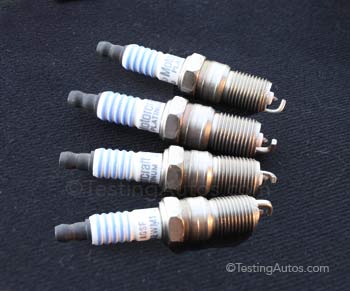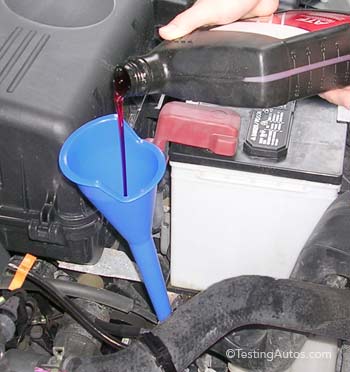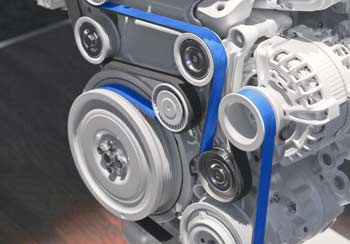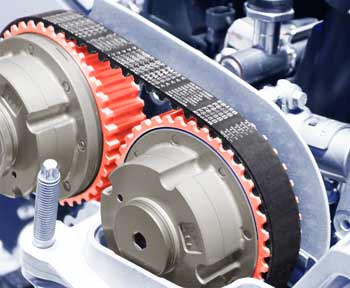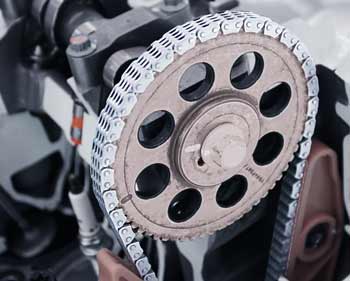How often do brakes need to be serviced?
Updated: April 22, 2020
Brakes should be replaced when worn out, but how often do brakes need servicing? Servicing brakes means servicing the brake components (cleaning, lubricating, etc.) without replacing them. Brakes are serviced to make sure they function properly between replacements and the car is safe to drive.How often do brakes need servicing? If you live in the area where road salt is used during winter, brakes in your vehicle need to be inspected regularly and serviced at least once a year. This is because road salt causes excessive corrosion of the brake components that can cause the brake pads to seize up. In other areas, brakes need to be inspected regularly and serviced when needed. For example, if during an inspection your mechanic has found that some of the parts show signs of sticking or seizing up, or when rust or dirt buildup causes brake noises, brakes need to be serviced. If brake pads or rotors are worn out, brakes need to be replaced.
Some car makers include brake service into the maintenance schedule, others specify that brakes need to be inspected in regular mileage or time intervals; typically every 5,000-7,000 miles or every 4-6 months, whichever comes first.
Brakes also need to be inspected and serviced (or replaced) if they are not working properly, squeak, grind or produce other abnormal noises, or if the brake pedal doesn't feel "right."
What are the benefits of servicing the brakes?
Benefits of servicing brakes include longer life of the brake pads and rotors, brake calipers, or drum brake components, better brake performance and less brake-related noises. Servicing brakes is especially important in the "Salt Belt." See the photo of a rusted brake caliper that we replaced in an 8-year old SUV after 8 winters with road salt. Servicing brakes will give you peace of mind, knowing that your car has properly functioning brakes and is safe to drive.The disc brake service includes removing the pads and calipers, cleaning and lubricating guide pins and the caliper brackets to prevent sticking or seizing. The brake discs (rotors) might also need to be cleaned out from the surface rust, especially on the edges, to prevent squeaking. Servicing brakes must also be done following the manufacturer's instructions.
The rear drum brake service involves cleaning the components, including the parking brake parts and lubricating parts that need to be lubricated, as well as removing excessive rust buildup from the drums. Rear drum brakes and the parking brake might also need to be re-adjusted.
Similar issues happen with rear drum brakes: rust on the brake drums can cause squeaking, and some components, especially the parking brake parts, may seize up due to corrosion or lack of lubrication. In most cars, drum brakes have a self-adjusting mechanism that may also seize up. In time, a seized self-adjuster may cause longer pedal travel. Of course, drum brakes are fully covered by the drum, and they usually can last longer without servicing.
Brake inspection: In most service shops and dealerships, mechanics visually inspect your brakes whenever your wheels are removed when doing a tire rotation or other service. Brakes cannot be properly inspected without removing the wheels, for example when doing an oil change in a drive-through service. For this reason, we recommend having your brakes properly inspected at least once a year to keep your car safe. Check the reviews when choosing the shop; you don't want to trust your brakes to incompetent mechanics.
The brake inspection typically involves checking the brake components according to the manufacturer's guidelines. For example, measuring the brake pad or brake shoe material thickness and inspecting brake discs. If there are signs that pads or caliper guide (slide) pins are not moving freely, your mechanic may recommend servicing your brakes.
Should you service the brakes or replace them? If the brake pads are worn close to the safe limit or the discs are in bad shape, it might be more cost effective to replace brakes instead of servicing them. To help you decide, ask your mechanic or service writer how long the brakes will last if you service them now.
Advertisement
How long do the brakes last before they need to be replaced? On average, disc brakes last for 30,000-50,000 miles. Rear drum brakes last longer, sometimes up to 150,000 miles.
How much does a brake service cost? Typically a brake service costs $80-$130 per axle if no parts are replaced. Both brakes on the same axle are always serviced at the same time. If your brake discs or drums are rusted, warped, or worn unevenly, your mechanic may suggest having them machined (resurfaced) on the brake lathe. This costs more. Warped or unevenly worn brake discs or drums cause steering vibration and brake pedal pulsation while braking.
How do disc brakes work?
Most cars on the road today have disc brakes on all four wheels. Some vehicles have drum brakes on the rear wheels. How disc brakes work: the brake pads are installed on both sides of the brake disc (also known as rotor). When a driver presses the brake pedal, the hydraulic pressure pushes the piston (or pistons) out of the brake caliper. As a result, the two brake pads squeeze the brake disc between them.To work properly, the brake pads have to be able to slide inside the brake caliper towards and away from the disc. In a brake system with a floating caliper found in most cars (in the photo), the caliper itself also must be able to slide laterally on its bracket (anchor plate). In this design, the caliper slides on two guide (slide) pins.
The disc brakes endure a lot of heat when braking and can get wet during the rain. As a result, the brake components can rust. Rust buildup may cause brake pads to stick within the bracket or the brake caliper guide (slide) pins to seize up.
